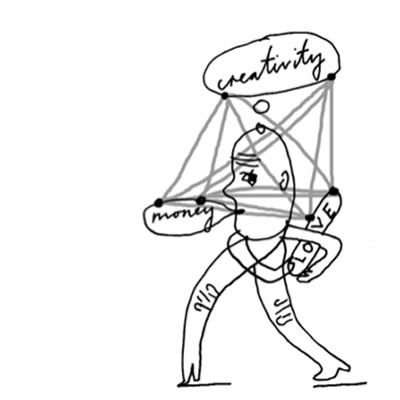First published on November 2011.
Creative learning is the most effective catalyst for the vital life-chemistry of ambition, confidence and expectation. Creative learning unlocks expectation. It unlocks heightened expectation for young people of themselves. Even more powerfully, it unlocks the expectation which teachers, parents and carers have of young people. And those heightened expectations are self-fulfilling. Never has this been a more important virtuous circle to create and sustain.
Of course there is intrinsic joy in creative learning. In that sense it needs no justification. But let’s spotlight an extrinsic purpose of creative learning – self-fulfilling heightened expectation.
There is research evidence and literature on the value of setting high expectations and the common unconscious slip by teachers into underestimating pupil potential. The study by Rutter, ‘Fifteen Thousand Hours’ (1979), reported on a number of London schools in deprived areas and suggested the recalibration of teacher expectation was a key to fostering well-being and achievement among disadvantaged children. There are many behavioural studies from North America and Canada showing that teacher expectation has a dramatic effect on achievement (Fry 1982, Garmezy 1991, Mehan et al 1994).
As these dates indicate, we have known for a long time that expectation is a cornerstone of pupil success.
But in turn we also know that creative learning is the key to unlocking those expectations. Consider the evidence from OFSTED in their inspection of creative learning. OFSTED’s report on how Creative Partnerships – at the heart of which is creative learning inspired by creative practitioners working in schools – has routinely unlocked expectations of pupils, teachers, parents and carers – with consequent and quantifiable improvements in attendance, attainment levels and parental involvement.
‘The most effective programmes had a real purpose that motivated teachers and pupils, regardless of their prior experience. For many pupils, the high quality of the experience was directly related to the unpredictable approaches taken by creative practitioners working with teachers and the different relationships that developed. Pupils were particularly inspired by opportunities to work directly in the creative industries. Such involvement gave them high aspirations for the future.’ (Learning: Creative approaches that raise standards. OFSTED January 2010)
It is not only the expectations of teachers and pupils that are recalibrated through creative learning but those of parents too. It is clearly established that parental involvement in their child’s learning is a vital factor in the child’s success. ‘Their learning becomes your journey: Parents respond to children’s work in Creative Partnerships' was prompted by observations that children communicate their enjoyment of school-based creative projects to their parents to a much greater extent than their work in the core curriculum. The creative curriculum has a positive impact on home-school communications as parents develop perspectives on their children as learners and also on their own learning, past and present. Creative programmes offer low-risk invitations which encourage parents to engage with teachers and the whole school. Whilst some parents may lack confidence to support their children in literacy and numeracy, they feel able to extend creative programmes at home. Creative Partnerships offer strong models for developing and sustaining wider family learning as well as parental involvement in children’s learning.
‘My daughter’s confidence bowled me over. My husband sometimes says some of the things they get involved in are too grown up – but he went to the performance and ate his words. I cried!’
‘My daughter’s confidence bowled me over. My husband sometimes says some of the things they get involved in are too grown up – but he went to the performance and ate his words. I cried!’
Let me take you back to the National Portrait Gallery in 2005 to an exhibition titled ‘Family Faces’. This exhibition resulted from over 60 families in seven Haringey schools working with a ceramicist – children alongside parents, carers, grandparents and siblings. Each family produced a sculpture of itself. These sculptures, accompanied by the participants’ commentaries on the experience, formed a display at the Gallery as part of their ‘Reaching Out, Drawing In’ initiative (supported by the Heritage Lottery Fund). Those of us fortunate enough to visit that exhibition saw the outputs of a truly creative and memorable experience for those children and families. It was a scheme driven by principles of personal confidence, family learning, cultural identity and respect, problem solving, critical reflection – and celebration.
The sculptures were colourful, well-crafted, funny and sad – compelling accounts of human drama in those Haringey families. But the written commentaries were even more significant. There were questions for the children to complete.
‘Where did your ideas come from? From my dreams’
‘What was your favourite bit of the project? I feel proud. I realise that I have skills I didn’t know I had.’ (http://www.npg.org.uk/– Family Faces)
These words from a young person are the greatest reward to which a parent, carer, teacher can aspire. They are words which are the foundation for a young person’s growth – the chemistry of ambition, confidence and expectation. Creative learning changes our expectations of young people. It changes their expectations of themselves. Creative learning surrounds young people with positive expectation – it changes young lives.
 Creativity Money Love: Learning for the 21st Century by Creative & Cultural Skills is licensed under a Creative Commons Attribution-NonCommercial-NoDerivs 3.0 Unported License.
Creativity Money Love: Learning for the 21st Century by Creative & Cultural Skills is licensed under a Creative Commons Attribution-NonCommercial-NoDerivs 3.0 Unported License.
Illustrations by Paul Davis - http://copyrightdavis.blogspot.com/


